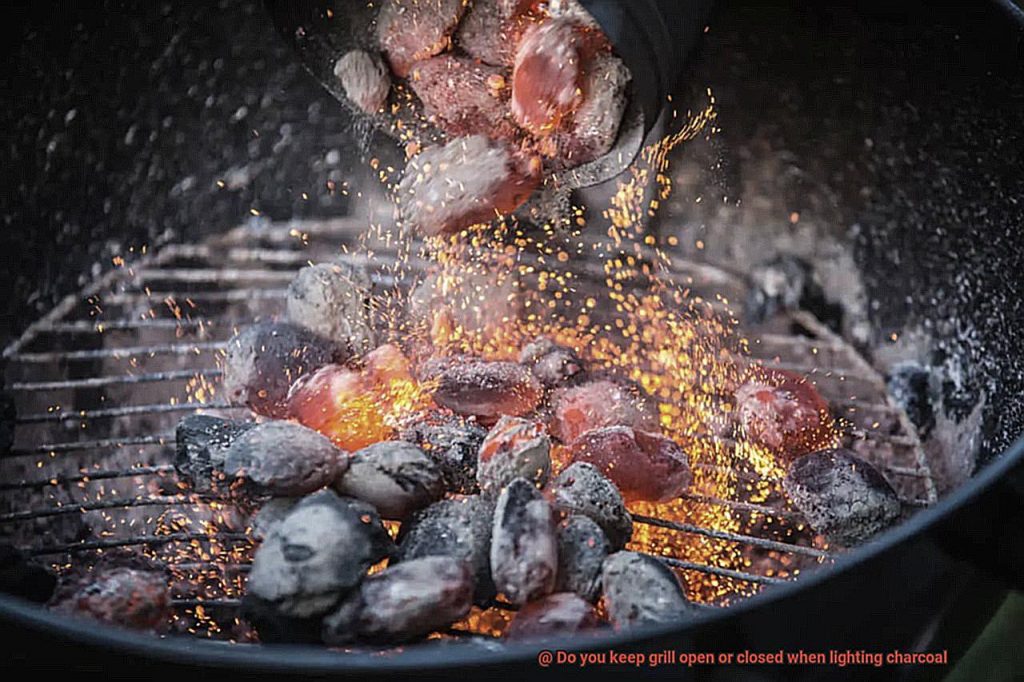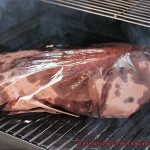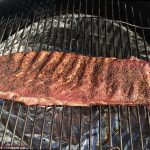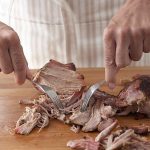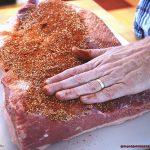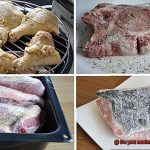Grilling is an art form, and every artist has their own approach. One of the most hotly debated topics in the grilling world is whether to keep the grill open or closed when lighting charcoal. Some say an open grill allows for better airflow and faster ignition, while others swear by keeping it closed to control heat distribution. In this blog post, we’ll explore both sides of the argument, giving you the knowledge you need to make an informed decision for your grilling adventures.
Contents
Keeping the Grill Open:
If you’re all about speed and efficiency, leaving the grill open is your go-to move. Proponents of this method argue that an open grill lets oxygen flow freely, igniting those coals in no time. This is perfect for spontaneous cookouts or when you’re just itching to get grilling ASAP. Plus, it’s a safer option if you’re using lighter fluids or other ignition aids.
But there are a couple of things to consider. Leaving the grill open can lead to heat loss as flames battle against external elements. And don’t forget about those pesky gusts of wind that can mess with your charcoal’s ignition process, requiring constant attention to keep that fire going strong.
Closing the Grill:
Now, let’s hear from the pros – pitmasters who know their way around a grill like nobody else. They swear by closing the lid during charcoal ignition for one simple reason: control. By sealing off the grill, they can manage heat more effectively and achieve a consistent temperature throughout their cooking surface. This technique is crucial for slow-cooking methods like smoking or long barbecue sessions where maintaining temperature stability is key.
Not only does a closed lid keep external elements at bay (looking at you, wind), but it also creates a smoky environment that infuses mouthwatering flavors into your meat as the charcoal ignites. It’s like adding an extra layer of deliciousness to your grilling game.
But here’s the catch – grilling with a closed lid might slow down the charcoal ignition process, which means longer cooking times. So, if you’re in a hurry or craving that quick sear, this method might not be your best bet.
In conclusion, whether you prefer an open or closed grill when lighting charcoal depends on your grilling style and desired outcome. If speed is your priority, go for an open grill. But if you’re after
Safety Considerations when Lighting Charcoal
When it comes to lighting charcoal, safety should always be a top priority. Grilling is a beloved pastime for many, but it’s important to take precautions to ensure that accidents and injuries are avoided. Here are some important considerations to keep in mind:
- Prioritize Ventilation: Good airflow is crucial when lighting charcoal. Charcoal produces carbon monoxide, a colorless and odorless gas that can be extremely dangerous in high concentrations. To prevent the buildup of this gas, make sure to have proper ventilation by leaving the grill open while lighting the charcoal. This means either leaving the lid off or propping it open slightly to allow air to flow freely. By prioritizing ventilation, you can reduce the risk of carbon monoxide poisoning and ensure a safe grilling experience.
- Keep Flammable Materials Away: It’s essential to keep flammable materials away from the grill when lighting charcoal. This includes paper, lighter fluid, or any other combustible items. Placing the grill in an open area away from structures or overhanging branches is another safety precaution to consider. By creating a safe distance between the grill and any potential fire hazards, you can minimize the risk of accidents and ensure everyone’s safety.
- Use Proper Lighting Techniques: Using proper lighting techniques is essential for safety when lighting charcoal. Avoid using excessive amounts of lighter fluid, as this can lead to flare-ups and uncontrollable fires. Instead, consider using a chimney starter or charcoal starter cubes to ignite the charcoal safely and efficiently. These tools provide a controlled flame that minimizes the risk of accidents and ensures a smooth ignition process.
- Have Fire Safety Equipment Nearby: It’s always a good idea to have fire safety equipment nearby in case of emergencies. This includes having a fire extinguisher or a bucket of water readily accessible in case of unexpected incidents. Being prepared with these tools can help you quickly and effectively respond to any fire-related situations, minimizing potential damage and ensuring the safety of everyone around.
- Follow Manufacturer’s Instructions: Different grills may have different safety recommendations, so it’s important to familiarize yourself with the instructions provided by the manufacturer for your specific grill model. These instructions will provide specific guidelines and safety precautions that are tailored to your grill’s design. By following these guidelines, you can ensure that you are using the grill safely and in accordance with the manufacturer’s recommendations.
Benefits of Keeping the Grill Open
When it comes to grilling, keeping the grill open is a game-changer. It’s not just about convenience or aesthetics – there are real benefits that can take your grilling experience to the next level. Let’s explore these advantages in detail:
Firstly, proper airflow is crucial for achieving and maintaining a high temperature. With an open grill, fresh air freely enters, providing the necessary oxygen for combustion. This ensures that your food is cooked to perfection, with no risk of undercooking or uneven heat distribution.
But that’s not all – keeping the grill open also helps prevent the buildup of smoke and harmful gases like carbon monoxide. These can be detrimental to both your health and the flavor of your food. By allowing these gases to escape, you can enjoy cleaner and safer grilling, and savor the mouth-watering flavors without any unwanted smoky aftertaste.
An open grill also ensures even ignition of the charcoal. When the grill is closed, heat becomes trapped, leading to some coals burning faster than others. This can result in frustratingly uneven cooking. But with the grill open, heat dissipates evenly, giving you consistent cooking results every time.
Temperature control is another benefit of keeping the grill open. By adjusting the vents on the grill, you have full control over the amount of oxygen that enters. This allows you to fine-tune the intensity of the fire and maintain a steady cooking temperature throughout your grilling session. No more worrying about fluctuating heat levels or overcooking your prized steaks.
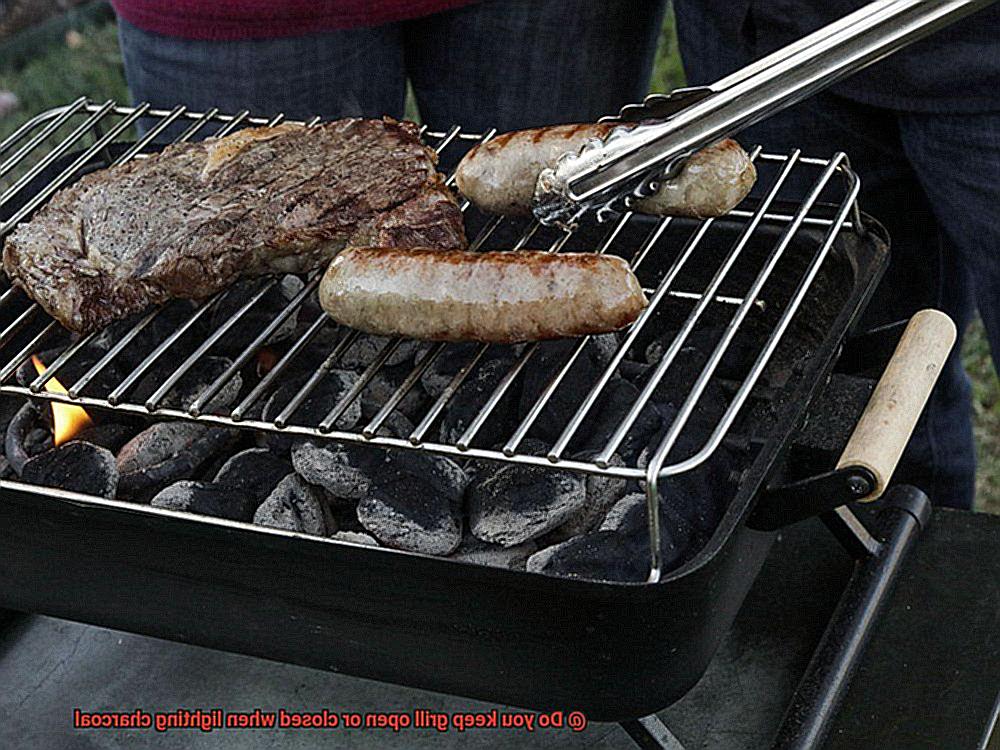
Visibility is also enhanced with an open grill. You have a clear view of the charcoal as it ignites and progresses towards its perfect cooking stage. This means you can easily monitor its progress and make timely adjustments as needed, ensuring that your food cooks evenly and doesn’t suffer from any hot spots or undercooked areas.
Lastly, an open grill promotes an interactive grilling experience like no other. With direct access to the fire, you can add more charcoal or adjust its position with ease. This hands-on approach allows you to actively engage with the grilling process, making real-time adjustments and ensuring that your food turns out just the way you like it.
Closing the Lid for More Efficient Cooking
Closing the lid when lighting charcoal for more efficient cooking is a practice that can greatly enhance your grilling experience. Here are some key benefits to consider:
- Even Heat Distribution: When the lid is closed, heat is trapped and circulated within the grill. This ensures that the heat is evenly distributed, resulting in consistent cooking throughout your food. No more hot spots or unevenly cooked meals.
- Moisture Retention: Closing the lid helps to retain moisture within the grill. This is particularly important for meats and vegetables that can easily dry out on the grill. By keeping the lid closed, you create a moist and flavorful cooking environment, resulting in juicy and succulent food.
- Flare-Up Prevention: By limiting the oxygen supply to the charcoal, closing the lid helps to prevent flare-ups. Flare-ups occur when fat or oil from food drips onto the hot coals, causing excessive flames. Closing the lid reduces oxygen flow and minimizes the chances of your food getting burnt or charred.
- Faster Heating: Closing the lid creates a convection effect, where hot air circulates within the grill. This speeds up the heating process and allows you to start cooking sooner. You’ll spend less time waiting for your grill to reach the desired temperature, making your grilling experience more efficient.
While closing the lid is generally recommended for lighting charcoal, it’s important to note that there may be exceptions depending on your grill model. Some grills may have specific instructions that recommend leaving the lid slightly open during the lighting process to ensure proper airflow and ventilation. Always consult your grill’s user manual or manufacturer’s guidelines for specific instructions tailored to your grill.
Monitoring Temperature and Adjusting Vents
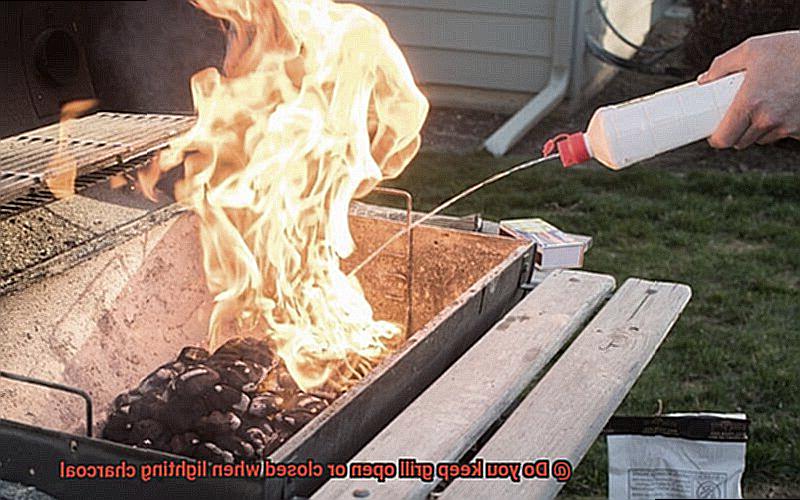
Achieving the perfect grilling experience requires mastering the art of monitoring temperature and adjusting vents. This critical step ensures that your food cooks to perfection and provides you with full control over the heat inside your grill. So, let’s dive into this essential process and discover how to harness the power of temperature and vent management.
To begin, monitoring the temperature is key. There are several methods to accomplish this. One option is to use a grill thermometer, which provides an accurate reading of the internal temperature. Another method involves observing the heat produced by the charcoal itself. Simply place your hand about six inches above the grill and feel the intensity of the heat. This hands-on approach allows you to gauge the temperature and adjust accordingly.
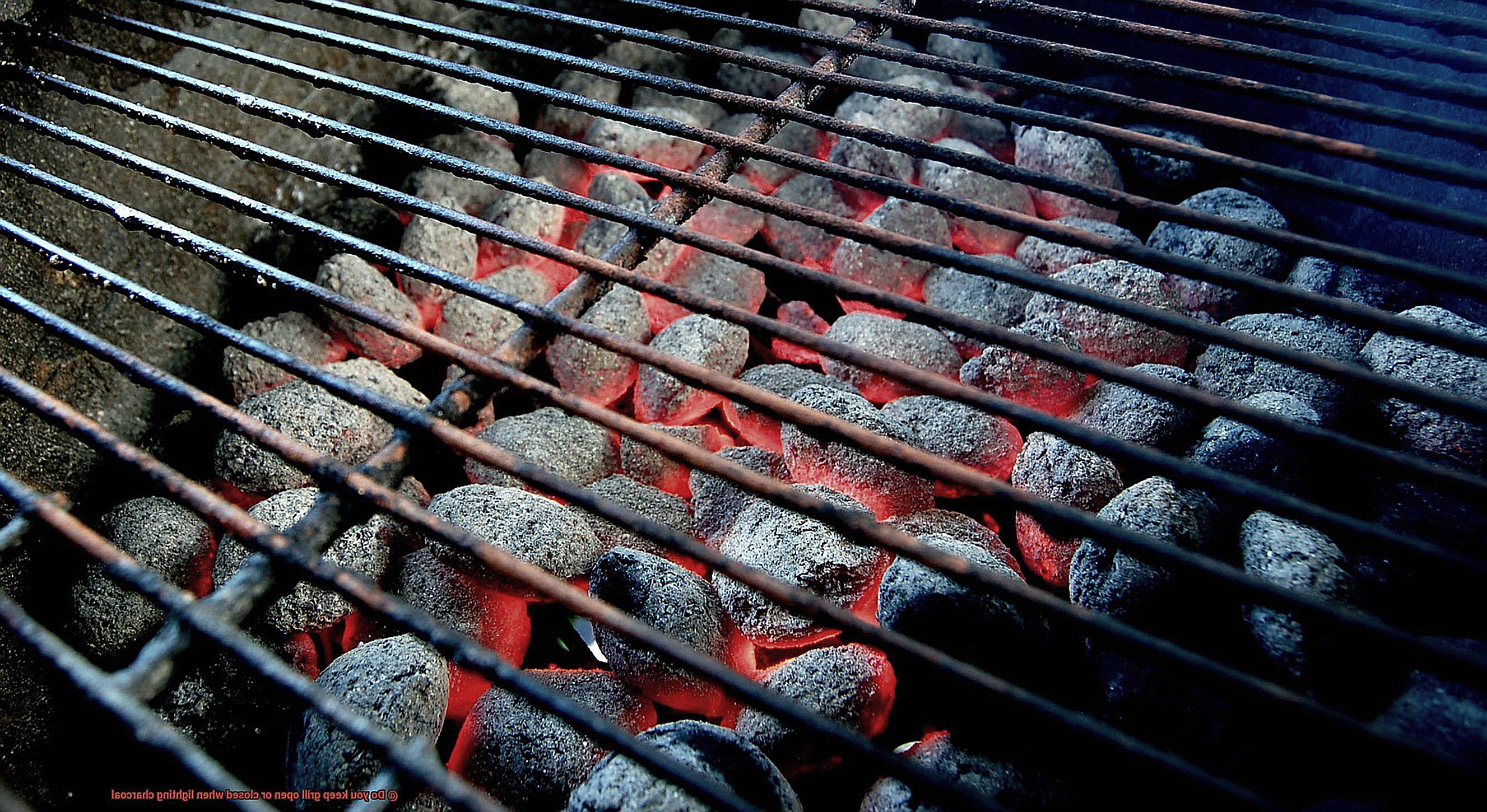
Once you’ve mastered temperature monitoring, it’s time to tackle vent management. When lighting charcoal, it’s generally recommended to keep the grill vents open. This encourages proper airflow and ventilation, helping the coals ignite efficiently. To achieve this, fully open both the top and bottom vents of your grill.
As the charcoal begins to ignite and burn, it’s time to fine-tune your vents. Adjusting them allows you to control the airflow and regulate the temperature inside the grill. By partially closing the vents, you reduce the amount of oxygen available to the coals, resulting in lower heat output. Conversely, if you need more heat, opening the vents wider increases airflow and raises the temperature.
It’s important to note that different grills may have varying vent configurations and settings. Some grills feature adjustable vents on both the top and bottom, while others may have only one vent. Take some time to understand how your specific grill operates and experiment with different vent settings to achieve optimal cooking temperatures.
Throughout your grilling process, continuous monitoring and adjustment of vents are crucial. This is especially important when cooking foods that require precise temperatures, such as slow-cooked meats or delicate seafood. Begin with a lower vent setting and gradually adjust as needed to maintain a consistent cooking temperature.
In addition to temperature control, adjusting vents also influences smoke production. Opening the vents wider allows more oxygen to reach the coals, resulting in a higher flame and increased smoke. Conversely, closing the vents reduces smoke production, which can be beneficial when grilling foods sensitive to strong smoke flavors.
Remember, monitoring temperature and adjusting vents are just two pieces of the grilling puzzle. The type and quality of charcoal used, the arrangement of the coals, and the positioning of the food on the grill also significantly impact cooking results.
Different Grilling Techniques Require Different Approaches
Grilling is a culinary art that offers a multitude of techniques, each requiring a unique approach to achieve the desired flavors and textures. Whether you’re an experienced grill master or just starting out, understanding the differences in grilling techniques and knowing when to keep the grill open or closed when lighting charcoal can greatly enhance your grilling experience. Let’s dive into the various grilling techniques and their recommended approaches:
- Direct Grilling: This technique involves cooking food directly over the heat source, perfect for quick-cooking foods like burgers, steaks, and vegetables. When lighting charcoal for direct grilling, it’s best to keep the grill open. This allows for optimal airflow, helping the coals ignite faster and reach the desired temperature more quickly.
- Indirect Grilling: Ideal for larger cuts of meat that require longer cooking times, such as whole chickens or roasts, indirect grilling involves cooking food away from the direct heat source. When lighting charcoal for indirect grilling, it is advised to keep the grill closed. Closing the grill creates a convection effect inside, ensuring even heat distribution and more controlled cooking.
- Smoking: Smoking is a slow-cooking method that imparts a delightful smoky flavor to foods like ribs, brisket, or salmon. When lighting charcoal for smoking, it is recommended to keep the grill closed. This traps the smoke inside, allowing it to circulate around the food and infuse its delicious flavor.
- Searing: Searing is a technique used to create a crispy crust on meats while retaining their tenderness and juiciness. To achieve a perfect sear, keep the grill open when lighting charcoal. This maximizes heat and airflow, creating intense temperatures that quickly sear the meat.
- Rotisserie: Rotisserie grilling involves cooking food on a rotating spit, an excellent method for roasting whole chickens, turkeys, or large cuts of beef. When lighting charcoal for rotisserie grilling, it is recommended to keep the grill closed. This ensures a consistent heat environment and even cooking on all sides.
While these approaches provide general guidelines, it’s important to consider personal preferences when deciding whether to keep the grill open or closed when lighting charcoal. Some prefer a faster ignition process and opt to keep the grill open, while others prioritize a more controlled cooking environment and choose to keep it closed.
Regardless of your chosen grilling technique, safety precautions should always be followed. Allow adequate space around the grill for proper ventilation and avoid placing flammable objects nearby.
Personal Preferences and Safety Considerations
When it comes to grilling, personal preferences and safety considerations should both be taken into account when deciding whether to keep the grill open or closed when lighting charcoal. Let’s explore these factors in more detail to understand how they can influence our grilling experience.
Personal preferences may vary among individuals. Some people prefer to keep the grill open when lighting charcoal because they believe it helps the coals ignite faster. The open lid allows for better airflow, which aids in the combustion process. This preference may be influenced by the type of grill being used, as different grills have varying ventilation systems. For example, a charcoal kettle grill is designed to be used with the lid on, while a gas grill with a charcoal insert may have a different setup.
Safety considerations are also crucial in this decision-making process. Keeping the grill open while lighting charcoal can help prevent the buildup of flammable gases. These gases can escape through the open lid and reduce the risk of flare-ups or explosions when the flames come into contact with them. Additionally, an open lid provides better visibility, allowing for easier monitoring of the charcoal as it ignites.
On the other hand, some experts recommend keeping the grill closed while lighting charcoal for safety reasons. Closing the lid can help contain any potential flare-ups and prevent sparks from flying out of the grill. This is particularly important if there are flammable materials nearby that could catch fire. However, it’s crucial to ensure that there is proper ventilation to avoid an excess buildup of carbon monoxide, which can be harmful if inhaled.
To ensure both personal preferences and safety considerations are met, it’s recommended to follow these best practices:
- Begin by cleaning the grill grates and removing any excess ash or debris.
- Place the charcoal in a pile or pyramid shape in the center of the grill.
- If choosing to keep the grill closed, ensure there is proper ventilation by opening any vents or dampers.
- Use a chimney starter or lighter fluid to ignite the charcoal.
- Allow the coals to burn until they are covered with white ash, indicating they are ready for cooking.
- If choosing to keep the grill open, monitor the charcoal closely to prevent flare-ups or excessive smoke.
- Once the charcoal is ready, spread it evenly across the grill grates and start grilling.
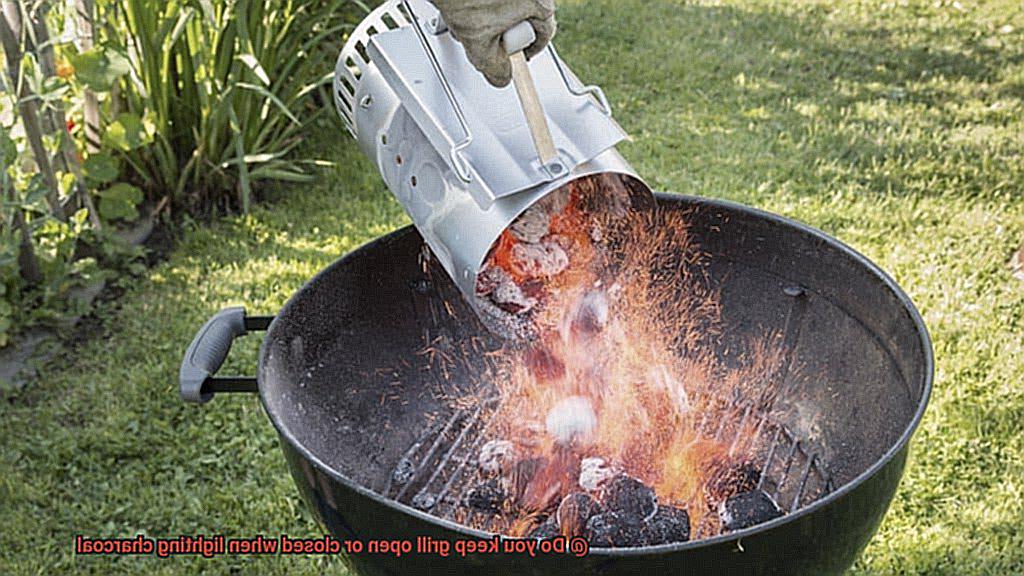
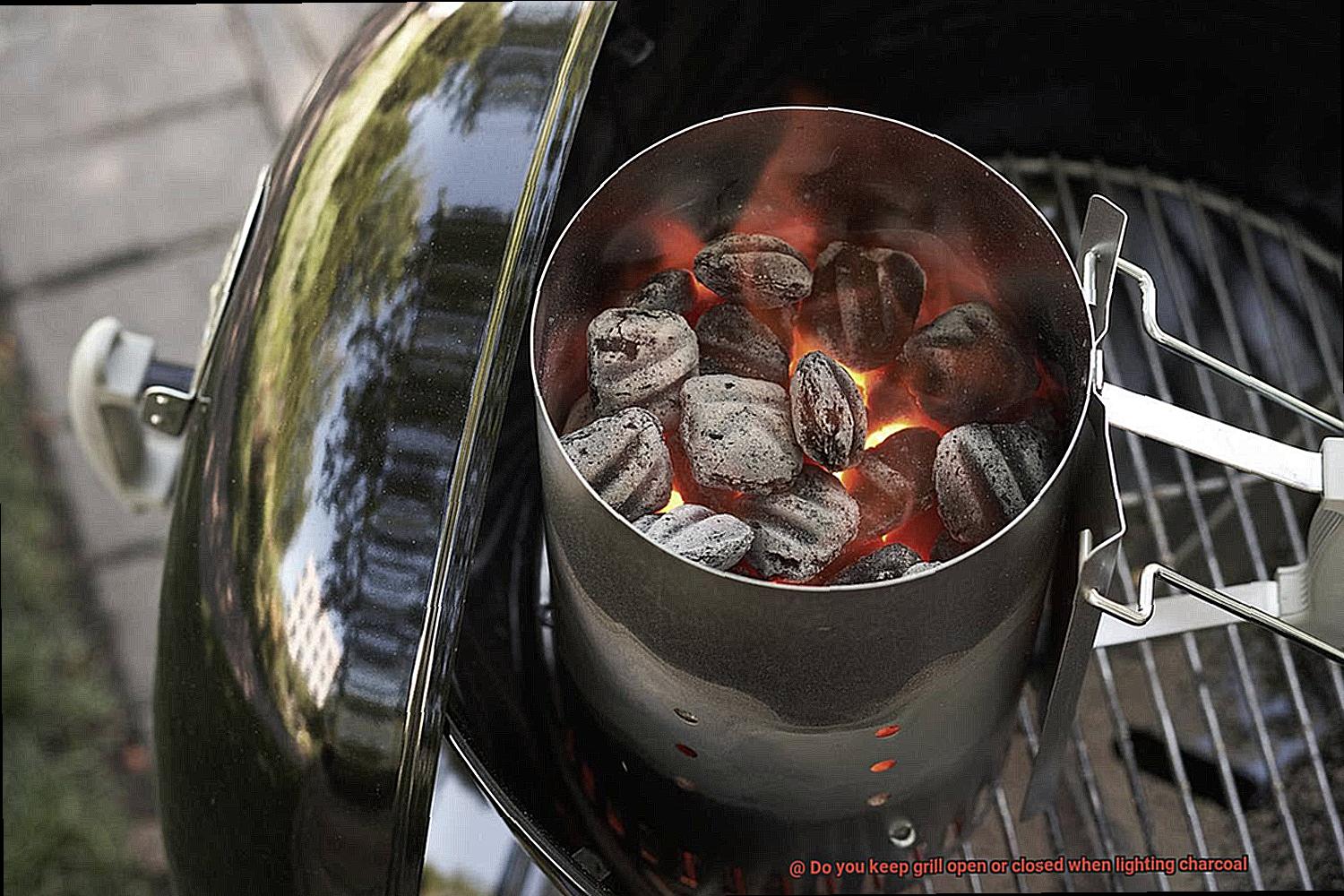
Manufacturer Instructions for Your Grill Model
Grilling is more than just a cooking method; it’s an art form that brings people together. But to unlock the full potential of your grill, it is crucial to follow the manufacturer instructions for your specific grill model. These instructions act as a secret recipe, guaranteeing safety, efficiency, and mouthwatering results. Let’s delve into why you should never underestimate the power of these guidelines.
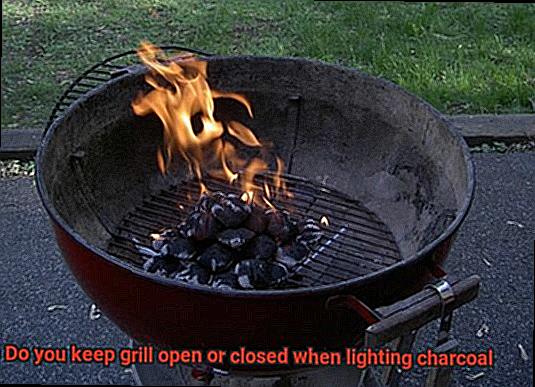
Safety First:
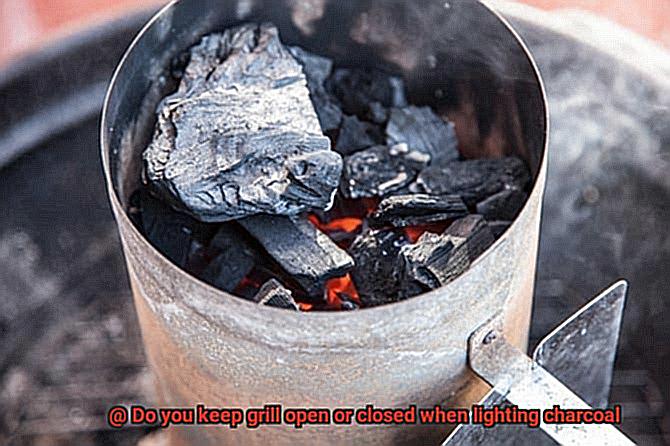
Manufacturer instructions provide essential information to keep you safe while grilling. They outline whether to keep the lid open or closed during the charcoal lighting process. This detail ensures proper ventilation, preventing any dangerous gas buildup that could lead to an explosion. By following these instructions, you can enjoy your grilling sessions with peace of mind.
Efficient Ignition:
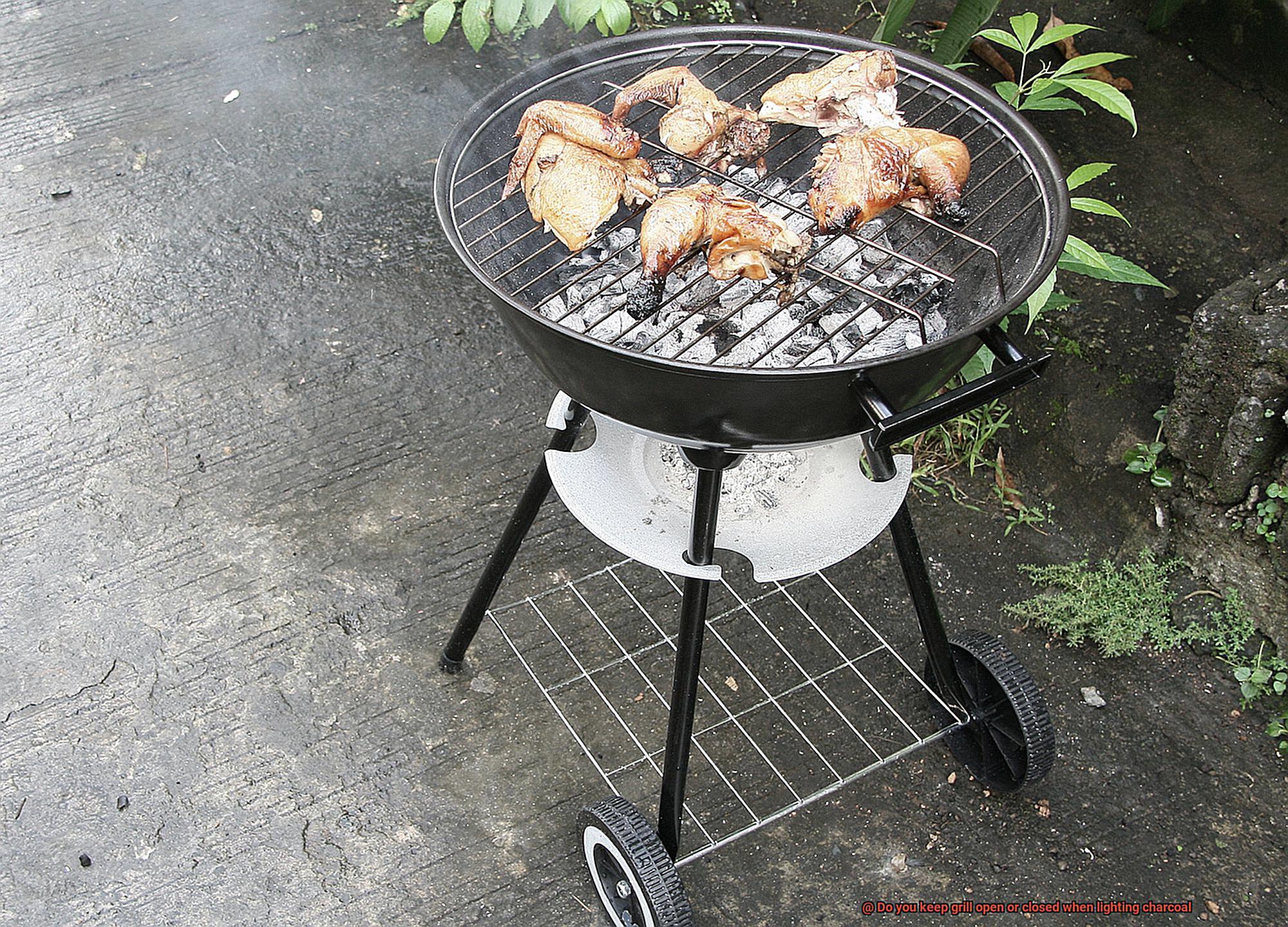
Different grill models have distinct designs and features, which is why manufacturers provide specific instructions for lighting charcoal. Some grills require an open lid, allowing air to circulate and ignite the charcoal efficiently. Others recommend a closed lid, trapping heat for faster ignition. Following these instructions ensures that your charcoal lights up quickly and evenly, saving you time and effort.
Proper Charcoal Placement:
Manufacturer instructions often include recommendations on how to position the charcoal within the grill. They may suggest using a charcoal chimney or arranging the briquettes in a specific pattern. Following these guidelines ensures even heat distribution, resulting in perfectly grilled food with enhanced flavors. Don’t underestimate the impact of proper charcoal placement on your grilling success.
Avoid Accidents and Damage:
Failure to adhere to manufacturer instructions can lead to accidents or damage to your grill. Whether it’s flare-ups, sparks, or mishaps that could ruin your grilling experience, these guidelines are designed to prevent such incidents. By following the instructions diligently, you can ensure a smooth and hassle-free grilling experience every time.
Expert Assistance:
If you find yourself unsure about any specific instructions or have misplaced your grill manual, don’t worry. Manufacturers are there to help. Reach out to them directly or visit their website for online resources, videos, or frequently asked questions that can guide you through the process. They are the experts of your grill model and can provide valuable assistance when you need it most.
K5DRltODdSQ” >
Conclusion
When it comes to lighting charcoal on a grill, the age-old debate of whether to keep the grill open or closed has sparked countless discussions among grilling enthusiasts. While there are differing opinions on this matter, the general consensus leans towards keeping the grill open when lighting charcoal.
Why, you may ask? Well, allowing oxygen to flow freely through the grill helps facilitate the ignition process. By keeping the grill open, you’re ensuring that an adequate amount of oxygen reaches the charcoal, enabling it to ignite and start burning efficiently. This is particularly important if you’re using traditional briquettes, which require a steady supply of oxygen to catch fire properly.
But don’t just take my word for it – let’s delve into some more specifics. When you light charcoal with the grill closed, you risk restricting airflow and suffocating the coals. This can result in a slow and uneven burn, leaving you with undercooked or charred food. Nobody wants that.
On the other hand, keeping the grill open allows for better temperature control throughout the cooking process. With an open grill, you can easily adjust airflow by manipulating vents or dampers, ensuring optimal heat distribution and preventing flare-ups.
So remember: when it’s time to light your charcoal, embrace the power of openness. Let your grill breathe in that fresh air and watch as those coals come alive with fiery brilliance. Your taste buds will thank you for it.
In conclusion, while there may be differing opinions on whether to keep the grill open or closed when lighting charcoal, it’s generally recommended to keep it open. This allows for proper airflow and ensures a more efficient ignition process.

